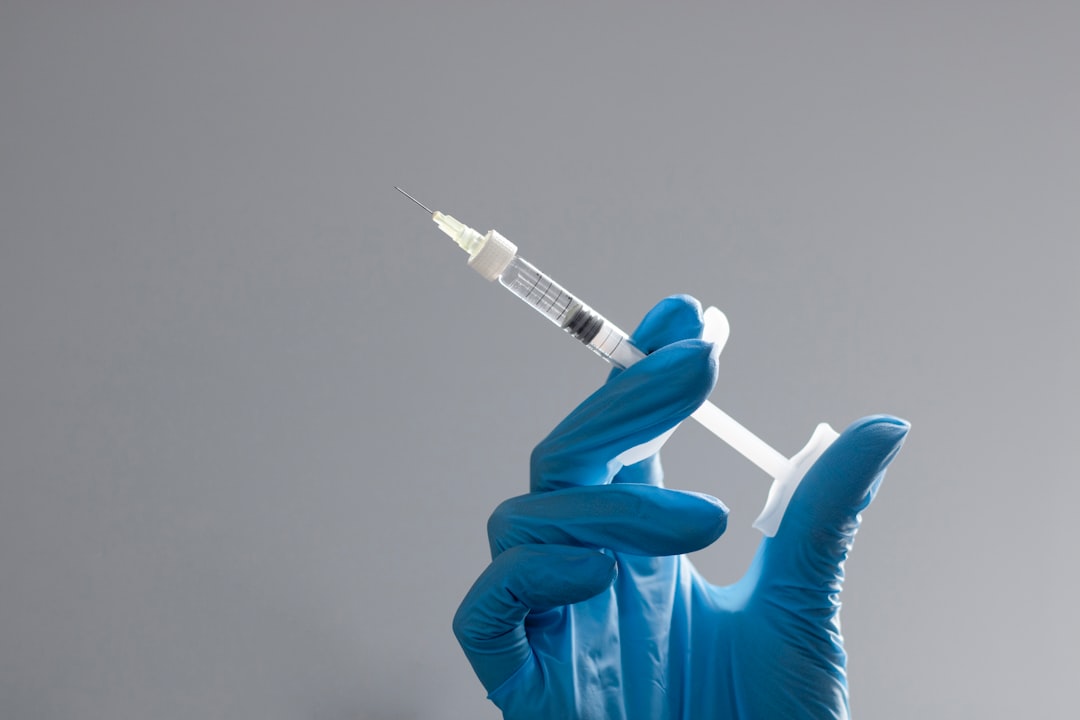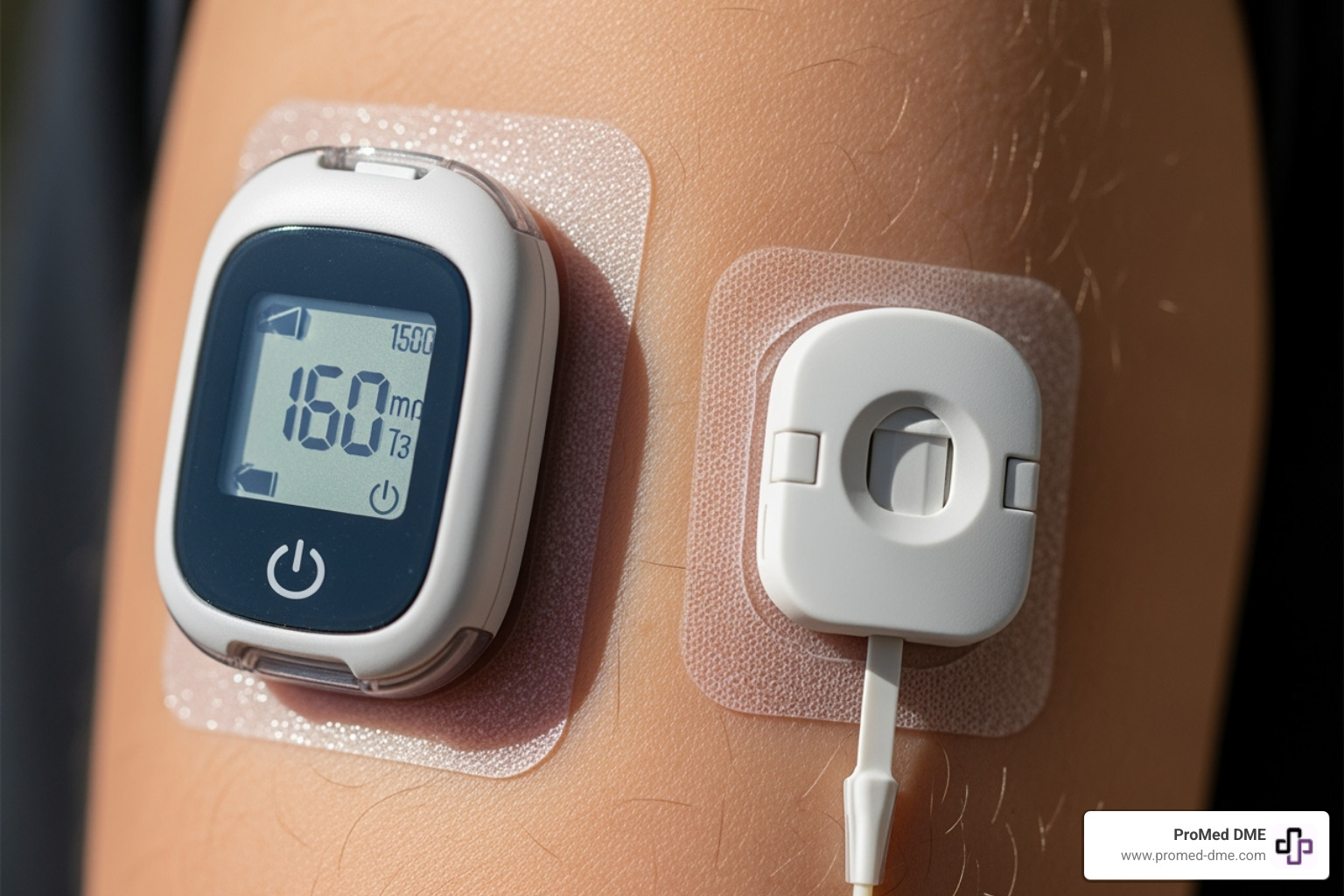Keep it Clean: Understanding Sterile Insulin Syringes
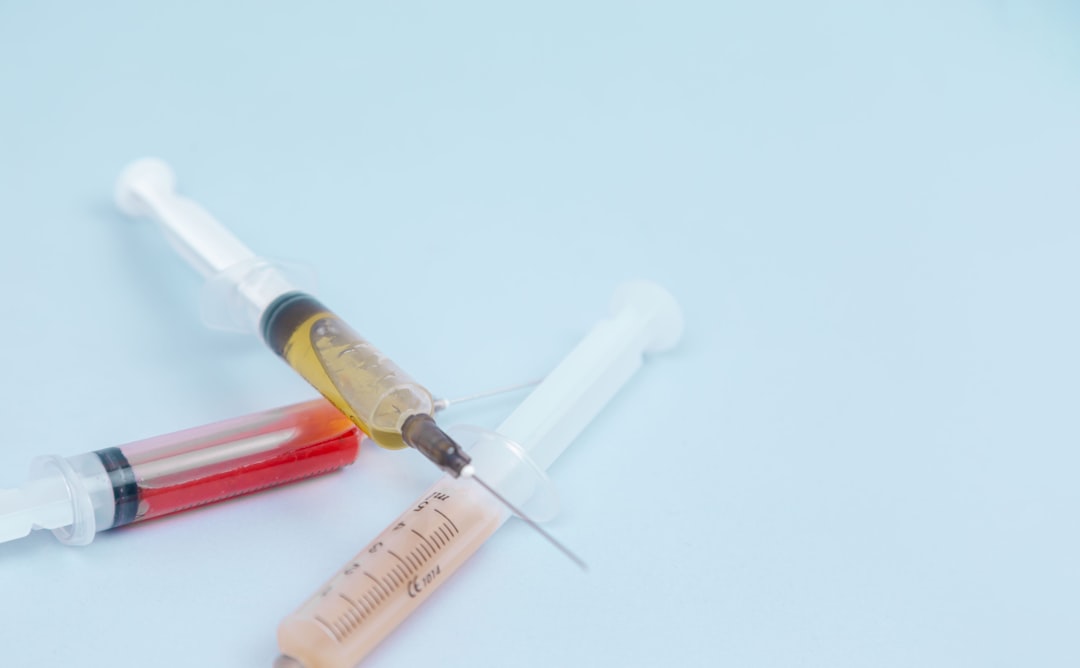
Why Sterile Insulin Syringes Are Essential for Diabetes Safety
Sterile insulin syringes are single-use medical devices specifically designed for safe insulin delivery, featuring individually wrapped packaging that maintains sterility until use. These syringes prevent infections and ensure accurate dosing for the 537 million adults worldwide living with diabetes.
Key Features of Sterile Insulin Syringes:
- Sterile packaging - Individually wrapped with tamper-evident seals
- Medical-grade materials - Polypropylene barrels, stainless steel needles
- Precise markings - Clear unit graduations for accurate dosing
- Single-use design - Prevents contamination and infection
- Various sizes - 0.3mL to 1mL capacities with different needle gauges
With diabetes cases projected to reach 783 million by 2045, the global insulin syringe market has grown to $1.1 billion and continues expanding at 6.5% annually. This growth reflects the critical importance of reliable, sterile delivery systems for daily diabetes management.
For people managing diabetes, understanding sterility isn't just about following medical guidelines - it's about protecting your health with every injection. Non-sterile or reused syringes can introduce dangerous bacteria into your bloodstream, leading to serious infections that could require hospitalization.
The difference between a sterile and non-sterile syringe might seem small, but the health consequences can be enormous. Whether you're new to insulin therapy or have been managing diabetes for years, knowing what makes a syringe truly sterile helps you make informed choices about your care.
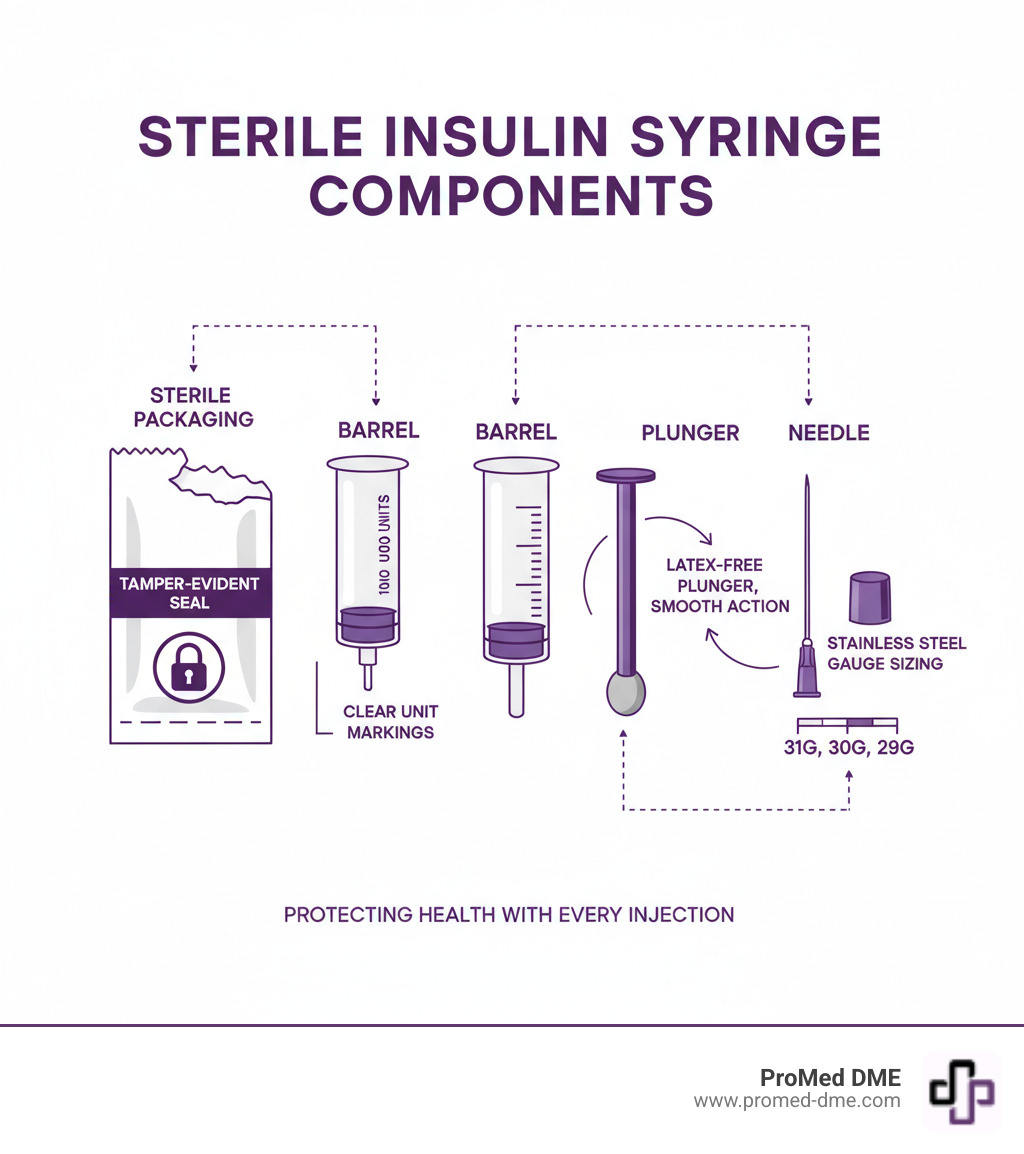
Sterile insulin syringes further reading:
- insulin syringes same day delivery
- same day insulin syringe delivery
The Science of Sterility: What It Means for Your Health
When you open a sterile insulin syringe, you're holding the result of incredibly precise science designed to keep you safe. But what does "sterile" actually mean, and why should you care about it every single day you manage your diabetes?
Think of sterility as a clean slate - completely free from any living microorganisms like bacteria, viruses, fungi, or spores. It's not just "really clean" or "mostly clean." It's absolutely, positively free from anything that could harm you. For people with diabetes, this matters even more because your body may take longer to fight off infections and heal from complications.
This is where aseptic technique becomes your best friend. It's basically a fancy term for doing things in a way that prevents contamination. When you wash your hands thoroughly before an injection or clean your injection site with an alcohol swab, you're practicing aseptic technique. The sterile insulin syringe is already doing its part by arriving completely sterile - you just need to keep it that way until injection.
Here's the thing about reusing syringes or using non-sterile ones: even if they look perfectly clean, invisible troublemakers could be lurking. These microscopic organisms can multiply quickly, turning your injection site into a potential infection zone. Plus, reused needles become dull, making injections more painful and potentially damaging your tissue.
So how do manufacturers make sure every sterile insulin syringe meets these strict safety standards? It all comes down to proven sterilization methods and rigorous oversight.

Most insulin syringes are sterilized using Ethylene Oxide (EO) gas, a low-temperature process that's perfect for plastic medical devices. This gas penetrates the packaging and eliminates all microorganisms without damaging the syringe materials. The process ensures the final product is both non-toxic and won't cause fever reactions in your body.
The regulatory oversight is impressive too. Insulin syringes are classified as Medical Device Class IIa, which means they're considered moderate-risk devices requiring serious regulatory attention. The FDA closely monitors these products, requiring manufacturers to meet strict quality standards and obtain proper certifications before their syringes can reach you. You can learn more about FDA medical device classifications to understand the rigorous standards these products must meet.
When you see certifications like CE marking or ISO 13485 compliance on packaging, you're looking at proof that the manufacturer has jumped through extensive regulatory hoops. These aren't just bureaucratic checkboxes - they're your guarantee that every sterile insulin syringe has been thoroughly tested and meets global safety standards.
This robust system means that when you peel open that individual, tamper-evident package, you can trust that what's inside is ready to safely deliver your insulin exactly as intended.
Anatomy of an Insulin Syringe: A Closer Look
When you hold a sterile insulin syringe in your hand, you're looking at a carefully engineered medical device where every component has been designed with your safety and comfort in mind. Let's explore what makes these syringes so effective for precise insulin delivery.
Core Components and Medical-Grade Materials
Think of your sterile insulin syringe as having four essential parts working together seamlessly. The barrel forms the main body and is crafted from medical-grade polypropylene - a clear, durable plastic that lets you see exactly what's happening inside. Those bold scale markings you see aren't just printed on; they're precisely calibrated to help you draw the exact amount of insulin your body needs.
The plunger might look simple, but it's engineered for smooth, controlled movement within the barrel. You'll notice how effortlessly it glides - that's thanks to a special silicon coating on the barrel's inner surface. The plunger also features a firm stop that prevents you from accidentally pushing too far and losing precious insulin.
At the tip of the plunger sits a small but crucial component called the gasket. This creates a perfect seal inside the barrel, preventing any insulin from leaking back. Modern sterile insulin syringes use latex-free gaskets made from polyisoprene, so you don't have to worry about allergic reactions if you're sensitive to latex.
Finally, there's the needle itself - made from high-quality stainless steel and often coated with a thin layer of lubricant. This coating helps the needle glide smoothly through your skin, making injections as comfortable as possible. The needle is crimped directly to the syringe, creating a solid connection that minimizes dead space and ensures it won't come loose during use.
Decoding Needle Gauge and Length for Optimal Comfort
Here's where things get a bit counterintuitive, but stick with me. Needle gauge refers to the thickness of the needle, and the higher the number, the thinner the needle. So a 31G needle is actually much thinner than a 28G needle. Most sterile insulin syringes come with needles ranging from 28G to 31G, with some ultra-fine options going even higher.

Needle length is more straightforward - it's simply how long the needle is, measured in millimeters or inches. You'll typically see lengths ranging from 4mm (about 5/32") up to 12.7mm (1/2"). Shorter needles like 4mm or 8mm are often preferred because they're designed to deliver insulin into the fatty tissue just under your skin, not into muscle where absorption can be unpredictable.
Choosing the right size depends on several factors including your Body Mass Index (BMI), skin thickness, and preferred injection sites. Generally, shorter and thinner needles provide more comfort while still delivering insulin effectively. Your healthcare provider can help you find the sweet spot between comfort and proper insulin delivery, or you can ask our on-staff nurse for guidance.
Features That Ensure Dosing Accuracy
Precision matters enormously when it comes to insulin, and sterile insulin syringes incorporate several smart design features to ensure you get exactly the dose you need.
Syringe volume comes in three main sizes: 0.3mL, 0.5mL, and 1mL. The key is matching the syringe size to your typical dose. If you take smaller amounts of insulin, a 0.3mL or 0.5mL syringe gives you more spread-out markings, making it easier to read and draw precise amounts.
Here's something absolutely critical: insulin concentration. Most insulin today is U-100, meaning 100 units per milliliter, though you might occasionally encounter U-40 insulin with 40 units per milliliter. Your syringe must match your insulin concentration exactly - using the wrong combination can lead to dangerous dosing errors.
Low dead space design is one of those features you might not notice but makes a real difference. This refers to minimizing the tiny amount of insulin that could remain in the needle hub after injection. Less dead space means virtually all the insulin you draw actually gets delivered to your body, reducing waste and improving accuracy.
The unit markings on the barrel come in different increments depending on your needs. You'll find 1-unit increments for standard dosing, 0.5-unit increments for very precise small doses (especially helpful for children), and sometimes 2-unit increments on larger syringes for higher doses.
All these features work together to make sterile insulin syringes reliable tools for managing your diabetes with confidence and precision. Every component, from the medical-grade materials to the carefully calibrated markings, is designed to support your health and make your daily insulin routine as safe and comfortable as possible.
A Practical Guide to Using and Disposing of Sterile Insulin Syringes
When you're managing diabetes, having a solid routine for using your sterile insulin syringes makes all the difference. It's not just about following the rules - it's about protecting your health and making each injection as safe and comfortable as possible.
Step-by-Step Guide for Safe Insulin Injection
Think of your injection routine as a ritual that keeps you healthy. Once you get the hang of it, these steps will become second nature, giving you confidence and peace of mind with every dose.
Hand hygiene is where it all starts. Wash your hands thoroughly with soap and warm water for at least 20 seconds - about as long as it takes to hum "Happy Birthday" twice. If soap isn't available, use an alcohol-based hand sanitizer. This simple step is your first defense against infection.
Preparing the vial comes next. Take a moment to inspect your insulin - check that it looks right (clear if it should be clear, properly mixed if it's cloudy), and always verify the expiration date. Clean the rubber stopper with a fresh alcohol swab and let it air dry completely. This prevents any bacteria from hitching a ride on your needle.
Now for drawing the dose. Remove your new sterile insulin syringe from its sterile packaging - remember, these are designed for single use only, so never reuse them. Pull the plunger back to draw air equal to your insulin dose, then inject this air into the vial. This prevents a vacuum and makes drawing the insulin much easier.
Turn the vial upside down with the syringe attached, keeping the needle tip submerged in the insulin. Slowly draw your prescribed dose. Removing air bubbles is crucial for accuracy - gently tap the syringe barrel to make any bubbles rise to the top, then push them back into the vial before drawing your final dose.
Site selection matters for comfort and insulin absorption. Rotate between different areas like your abdomen, thighs, or upper arms to prevent tissue damage. Clean your chosen spot with an alcohol swab and let it dry completely.
For the injection technique, pinch a fold of skin and insert the needle straight in at a 90-degree angle (or 45 degrees if you have very little fat). Push the plunger slowly and steadily, then withdraw the needle straight out. Don't rub the injection site afterward.
The single-use principle cannot be emphasized enough. As soon as you withdraw that needle, your syringe goes immediately into a sharps container. No exceptions, no "just this once" - your safety depends on this rule.
Proper Storage and Conservation
Your sterile insulin syringes need a little TLC to stay in perfect condition until you're ready to use them.
Keep them at room temperature in a dry place. Your bathroom medicine cabinet might seem convenient, but the humidity from showers can compromise the packaging. A bedroom drawer or kitchen cabinet away from the stove works much better.
Store them away from light and heat sources. Direct sunlight, heating vents, or that spot near your coffee maker can all affect the plastic components and potentially compromise sterility.
Before each use, take a quick moment for checking packaging integrity. If the wrapper looks torn, punctured, or tampered with, that syringe is no longer sterile and needs to go straight into your sharps container.
Don't forget about expiration dates. Even sealed syringes can degrade over time, affecting both safety and performance. When in doubt, throw it out - your health is worth more than the cost of a single syringe.
Safe and Responsible Sharps Disposal
Here's where we protect not just ourselves, but our entire community. Needlestick injury prevention isn't just a medical concern - it's about keeping everyone safe, from family members to waste management workers.
Protecting the community starts with you. Used needles can carry blood-borne pathogens, and improper disposal puts others at risk. It's a responsibility we all share.
Using an FDA-cleared sharps container is the gold standard for disposal. These puncture-resistant containers are designed specifically for this purpose and are available at most pharmacies. They're worth every penny for the peace of mind they provide.
When your container gets about three-quarters full, it's time to dispose of it according to your local guidelines. Many communities have drop-off sites at hospitals, pharmacies, or fire stations. Some areas offer mail-back programs where you can send your full container through the postal service.
For detailed guidance on safe disposal options in your area, check out the Safe sharps disposal information from the FDA. They provide comprehensive resources to help you dispose of your used sterile insulin syringes safely and responsibly.
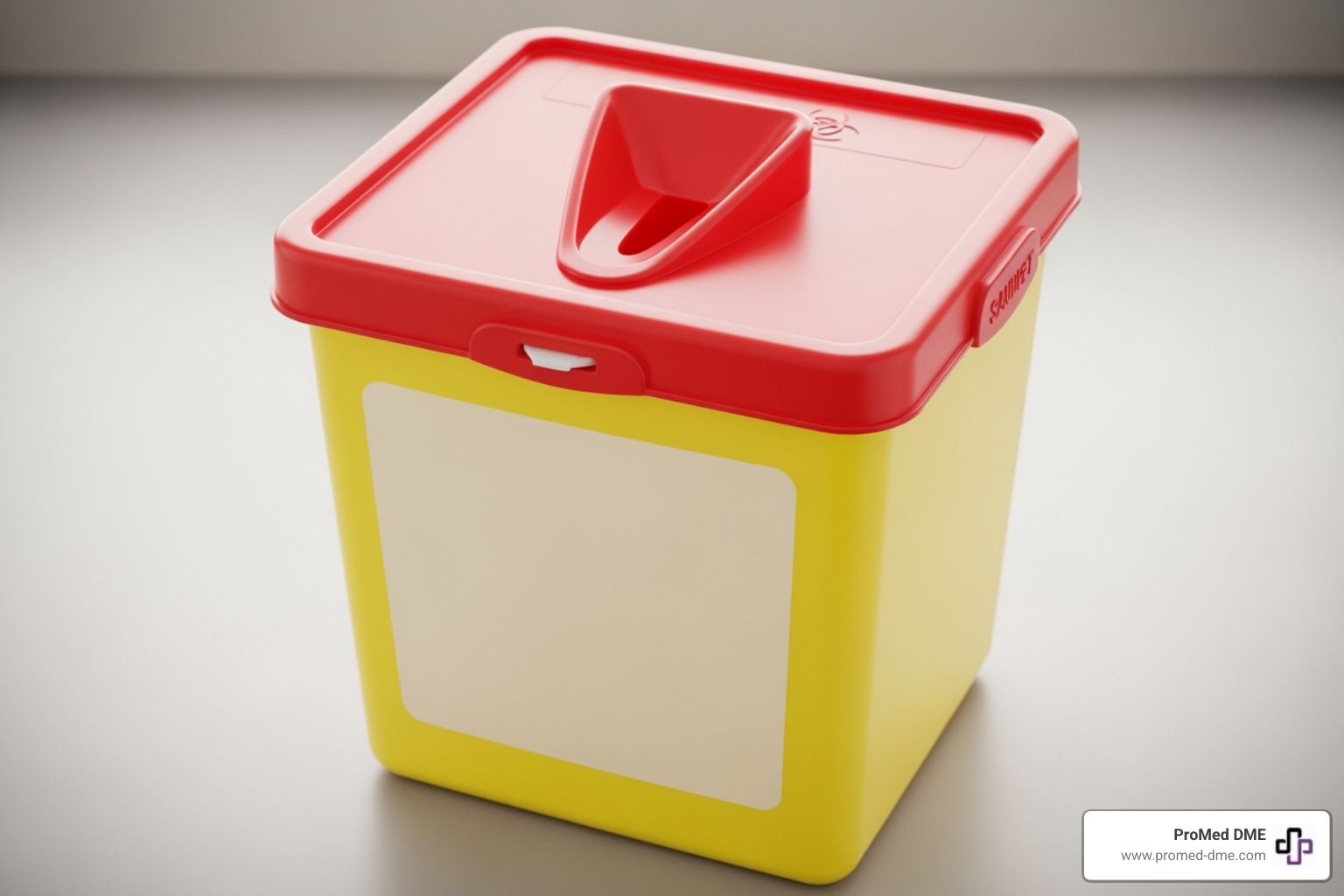
Managing diabetes is a journey, not a destination. Each safe injection brings you one step closer to better health, and following these practices ensures that every step is as safe as possible.
Preguntas frecuentes
We hear these questions all the time from people managing diabetes, and we're always happy to help you understand everything about sterile insulin syringes. Let's explore the most common concerns we encounter.
Can I reuse my sterile insulin syringes?
This is probably the question we get asked most often, and the answer is always a firm no. Sterile insulin syringes are designed as single-use medical devices, and there are some really important reasons why reusing them puts your health at risk.
The moment you use a syringe, it's no longer sterile. Even if you're super careful, bacteria from your skin, the insulin vial, or just floating around in the air can contaminate that needle. When you reuse it, you're essentially giving those harmful bacteria a direct path into your bloodstream. This can lead to serious infections, painful abscesses, or even more dangerous complications that might land you in the hospital.
Here's something you might not have thought about - needles actually get duller each time they're used. That ultra-fine tip that makes injections comfortable? It gets bent and damaged when it goes through your skin and the rubber stopper of your insulin vial. A dull needle doesn't just hurt more; it can cause bruising, scarring, and more tissue damage at your injection sites.
There's also the issue of inaccurate dosing. When you reuse a syringe, the plunger might not move as smoothly, or the rubber seal might not work as well. Insulin residue from previous injections can also affect how much insulin you're actually getting. When you're managing diabetes, precision matters.
We know that buying new syringes for every injection might feel expensive, but your health is worth it. Plus, we work with most insurance plans to help minimize your out-of-pocket costs.
What is the difference between U-100 and U-40 syringes?
This is a safety-critical question that can literally be life-threatening if you get it wrong. The difference comes down to insulin concentration, and matching your syringe to your insulin is absolutely essential.
U-100 syringes are calibrated for U-100 insulin, which has 100 units of insulin packed into every milliliter. These are by far the most common type you'll encounter - most people with diabetes use U-100 insulin and U-100 sterile insulin syringes.
U-40 syringes, on the other hand, are designed for U-40 insulin, which has only 40 units of insulin per milliliter. You'll mostly see U-40 insulin used for pets, though some human insulin formulations still use this concentration.
Here's why getting this right is so important: if you accidentally use a U-100 syringe with U-40 insulin, you'll end up injecting less than half the insulin dose you need. Your blood sugar could spike dangerously high. But if you use a U-40 syringe with U-100 insulin, you'll inject 2.5 times more insulin than intended, which could cause severe low blood sugar that requires emergency treatment.
Always double-check the concentration printed on your insulin vial and make sure your syringe matches exactly. When in doubt, ask your pharmacist or give us a call - we're here to help keep you safe.
How do I know which needle size is right for me?
Choosing the right needle size is like finding the perfect pair of shoes - what works great for one person might not be comfortable for another. While we've talked about the technical aspects of needle gauge and length, the best approach is getting personalized guidance.
Your healthcare provider will look at several factors to help you find your perfect match. Your Body Mass Index (BMI) plays a big role because people with more subcutaneous fat can often use slightly longer needles, while those with less body fat might need shorter ones to avoid accidentally injecting into muscle instead of fat.
The injection site matters too. Your abdomen, thighs, and upper arms all have different amounts of skin and fat thickness. Some areas might work better with certain needle lengths than others.
Your insulin type and injection technique can also influence the best needle choice. Some insulin formulations or injection methods work better with specific needle characteristics.
But honestly, personal comfort is huge. The best needle is one that you feel confident using consistently. If you're dreading your injections because the needle is uncomfortable, that's going to affect your diabetes management.
Our on-staff nurse has helped hundreds of people find their ideal sterile insulin syringes, and she'd love to help you too. She can walk you through the options and help you make the best choice for your specific situation. Don't hesitate to ask our on-staff nurse for guidance - that's exactly what she's there for.
Conclusión
Managing diabetes is a journey that requires the right knowledge, tools, and support system. Throughout this guide, we've finded that sterile insulin syringes are much more than simple medical devices – they're your daily partners in maintaining health and independence.
We've uncovered the fascinating science behind sterility, learning how ethylene oxide sterilization and individual packaging create an invisible shield against infection. We've explored every component of these precision instruments, from the crystal-clear polypropylene barrels that let you see exactly what you're doing, to the ultra-thin stainless steel needles designed to make each injection as comfortable as possible.
Most importantly, we've walked through the practical steps that turn medical knowledge into daily confidence. Whether it's choosing the right needle gauge for your comfort level, drawing insulin without air bubbles, or safely disposing of used syringes to protect your community, these skills become second nature with practice.
The numbers tell an important story – with diabetes affecting over 537 million people worldwide and growing, access to quality sterile insulin syringes isn't just about individual health anymore. It's about ensuring everyone managing diabetes has the tools they need to live their fullest life.
At ProMed DME, we understand that behind every medical supply order is a real person working to stay healthy. That's why we've built our company around more than just shipping products. Our nurse is always available when you have questions about needle sizes or injection techniques. We work with most insurance plans because managing diabetes shouldn't break your budget. And our free shipping across the United States means you never have to worry about running out of supplies.
Your health deserves the best, and that starts with choosing high-quality sterile insulin syringes and using them safely every single time. When you prioritize sterility, precision, and proper disposal, you're not just taking care of yourself – you're contributing to a healthier, safer community for everyone.
Ready to experience the ProMed DME difference? We're here to support your diabetes management with reliable supplies and genuine care. Explore our comprehensive diabetes care products and find how the right partnership can make all the difference in your daily routine.

Recursos y artículos relacionados
Manténgase informado con las entradas de nuestro blog informativo.
Descubra las ventajas de ProMed
y pruebe nuestros productos
Ofrecemos envío gratuito y un legendario servicio de atención al cliente para garantizar que reciba los
mejores productos de DME para sus necesidades.

